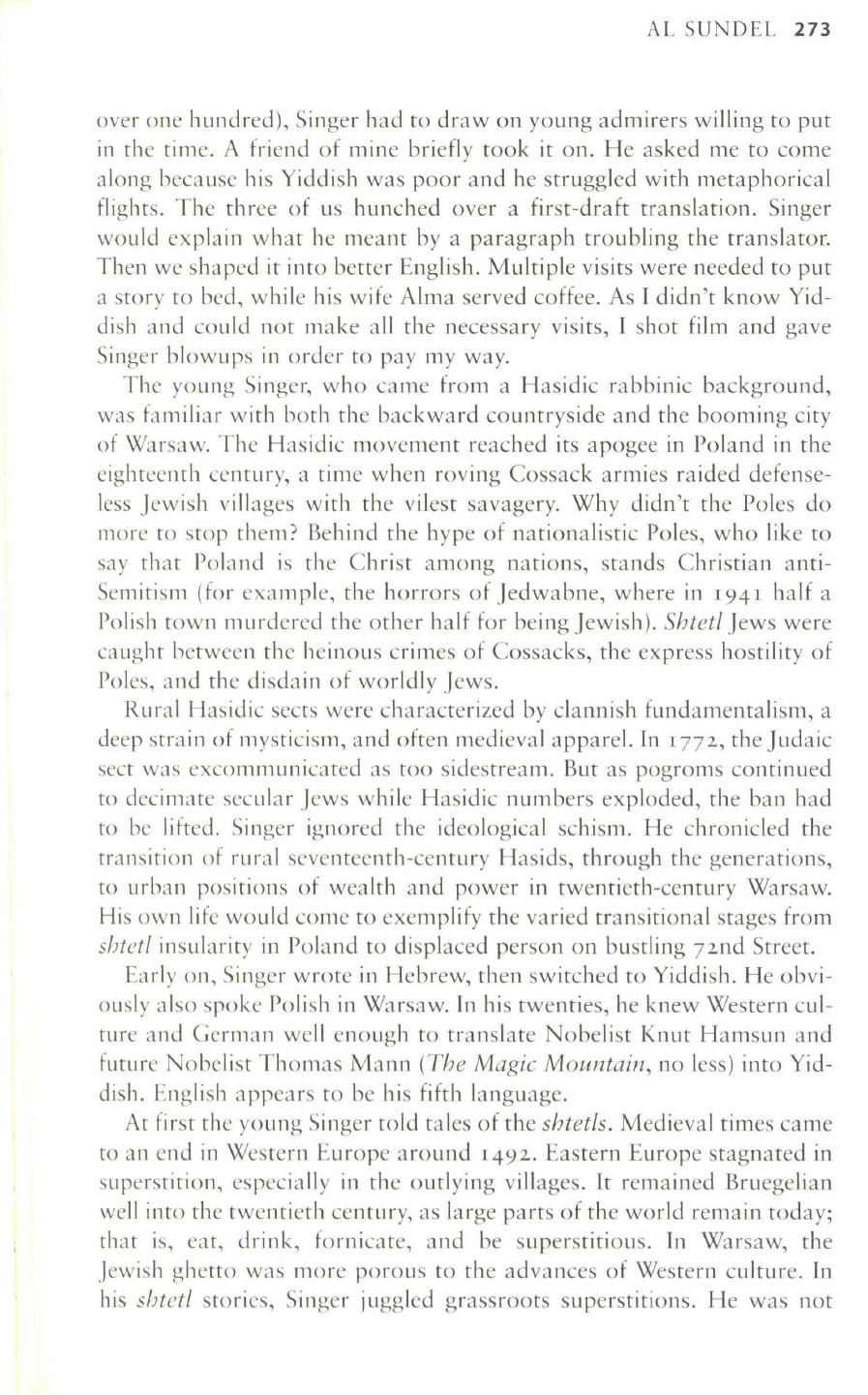
AL SUNDEL
273
over one hundred), Singer had to draw on young admirers willing to put
in the time. A friend of mine briefly took it on. He asked me to come
along because his Yiddish was poor and he struggled with metaphorical
flights. The three of us hunched over a first-draft translation. Singer
would explain what he meant by a paragraph troubling the translator.
Then we shaped it into better English. Multiple visits were needed to put
a story to bed, while his wife Alma served coffee. As I didn't know Yid–
dish and could not make all the necessary visits,
1
shot film and gave
Singer blowups in order to pay my way.
The young Singer, who came from a Hasidic rabbinic background,
was familiar with both the backward countryside and the booming city
of Warsaw. The Hasidic movement reached its apogee in Poland in the
eighteenth century, a time when roving Cossack armies raided defense–
less Jewish villages with the vilest savagery. Why didn't the Poles do
more to stop them? Behind the hype of nationalistic Poles, who like to
say that Poland is the Christ among nations, stands Christian anti–
Semitism (for example, the horrors of Jedwabne, where in 194] half a
Polish town murdered the other half for being Jewish).
Shtetl
Jews were
caught between the heinous crimes of Cossacks, the express hostility of
Poles, and the disdain of worldly Jews.
Rural Hasidic sects were characterized by clannish fundamentalism, a
deep strain of mysticism, and often medieval apparel. In 1772, the Judaic
sect was excommunicated as too sidestream. But as pogroms continued
to
decimate secular Jews while Hasidic numbers exploded, the ban had
to
be lifted. Singer ignored the ideological schism. He chronicled the
transition of rural seventeenth-century Hasids, through the generations,
to
urban positions of wealth and power in twentieth-century Warsaw.
His own life would come to exemplify the varied transitional stages from
shtetl
insularity in Poland to displaced person on bustling 72nd Street.
Early on, Singer wrote in Hebrew, then switched to Yiddish. He obvi–
ously also spoke Polish in Warsaw. In his twenties, he knew Western cul–
ture and German well enough to translate Nobelist Knut Hamsun and
future Nobelist Thomas Mann
(The Magic Mountain,
no less) into Yid–
dish. English appears to be his fifth language.
At first the young Singer told tales of the
shtetls.
Medieval times came
to
an end in Western Europe around L492. Eastern Europe stagnated in
superstition, especially in the outlying villages.
It
remained Bruegelian
well into the twentieth century, as large parts of the world remain today;
that is, eat, drink, fornicate, and be superstitious. In Warsaw, the
Jewish ghetto was more porous to the advances of Western culture. In
his
shtetl
stories, Singer juggled grassroots superstitions. He was not


